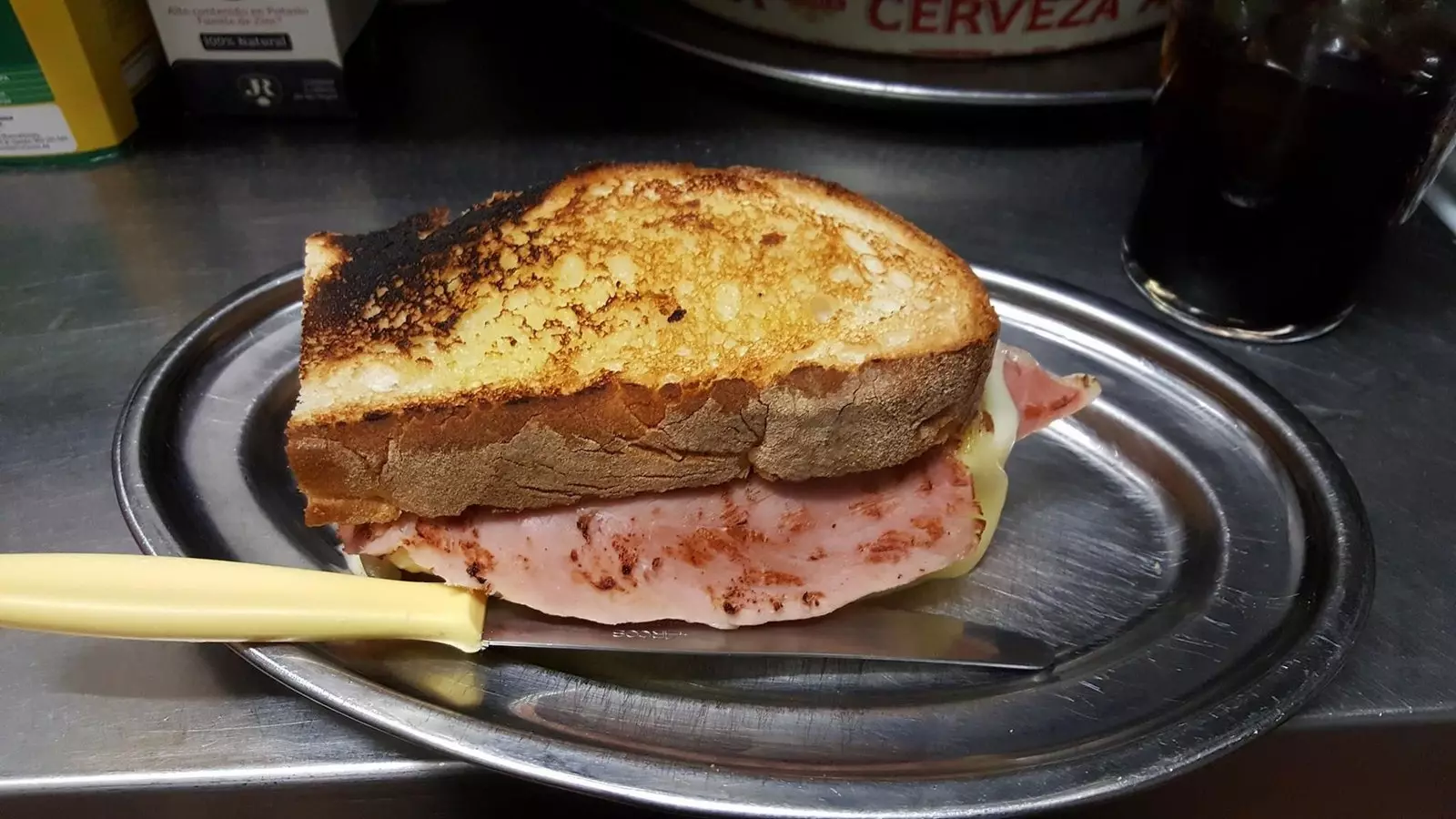
Sandwich 'zapatilla' from Melo's in Lavapiés
Survivor from another time, the Melo's is transferred in the midst of a pandemic . The news jumped to the networks last week after being announced in Idealista: “ Local rental in calle del Ave María, 44 ”. There was no room for doubt, the photo on the portal showed the facade of the mythical bar of the multicultural Lavapiés.
After the announcement, a string of comments emphasizing its history and how well it fed, despite the succinctness of his letter. only eight plates . A place, moreover, that he got remain irreducible to the gentrification of the neighborhood for forty years . But the strangeness was also there. Why would a place that gave benefits of more than 250 thousand euros a year be rented? Answer: “I have been given the ultimatum. I am seriously ill ”. On the other side of the telephone line lies Jose Ramon Alvarez Alonso , the person who during these four decades had dispatched at the bar of the iconic local thousands of slippers, croquettes and dumplings, along with cuncas de ribeiro . “I really like hospitality. I would never have imagined that I would have to leave it this way, ”explains this 65-year-old man from Leon, whose life has been linked to serving others since he left his native village, very affected. Buron.
El Melo's has been the true history of tapas and good eating in Madrid , when the term foodie had not even been invented. It would open on December 8, 1979 in an area that in those years lived another type of immigration, that of many Spaniards who traveled from their towns to seek a salary in Madrid, either in construction or in the hospitality sector. “ I came to the capital when I was just over 16 years old and immediately started working . I took the bar eight later. I did it with my wife. Before, he had been working in other establishments, such as The Chacon, in Puerta del Angel ”, He continues recounting.
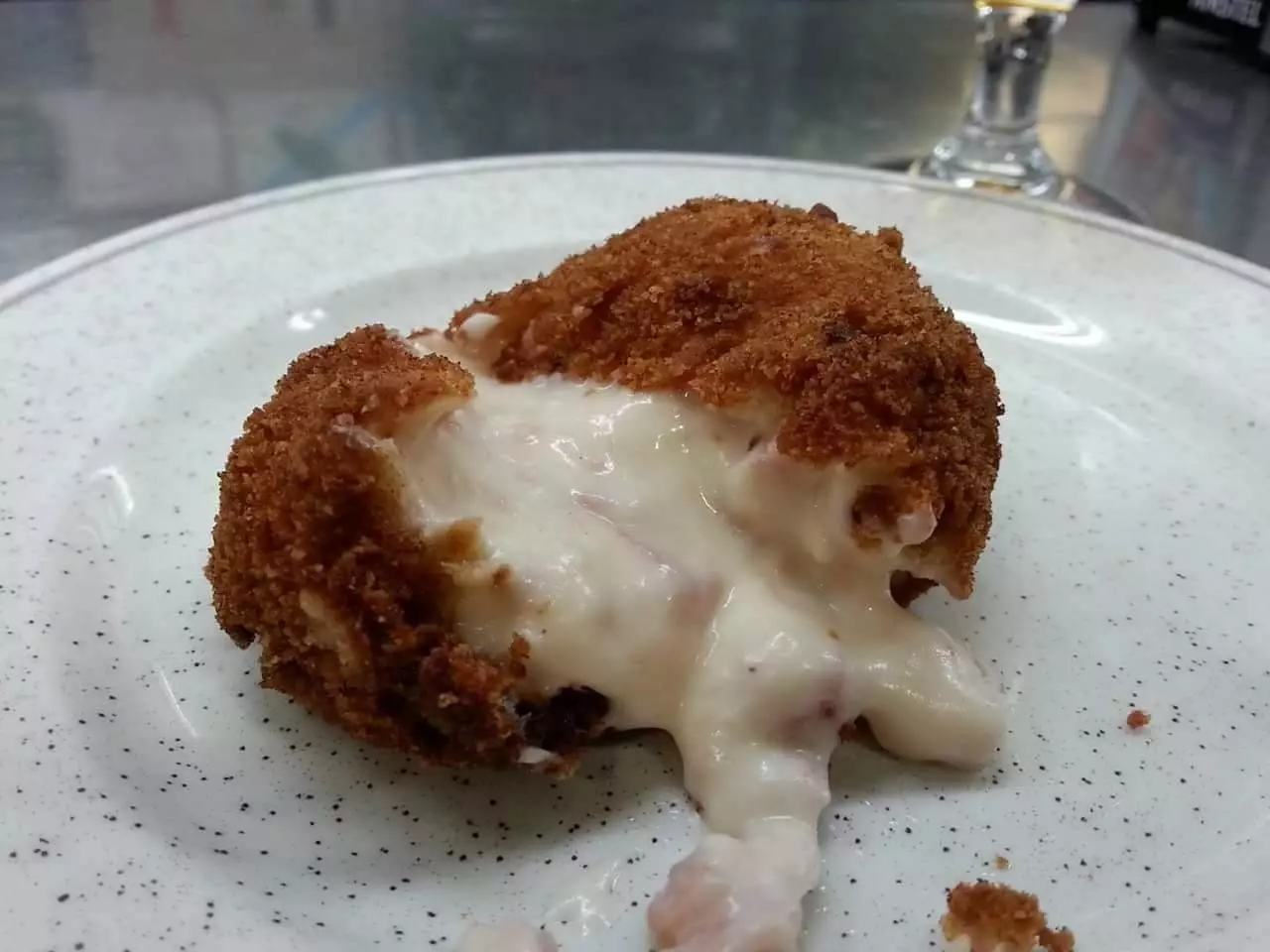
Melo's croquettes
Encarni and Ramon They built a gastronomic temple with relatively simple wickerwork: good genre and recognizable elaborations . They, along with other taverns that have now disappeared, managed to make Lavapiés a place of pilgrimage where bars, wineries and taverns of all kinds were linked with a wine or a beer as a flag. "They fed very well," says Gabi Vidal, a resident of the neighborhood and one of the first to realize the potential of that original establishment. “I lived on Esperanza street and usually had lunch there . The food was spectacular, plentiful and very good. They quickly distinguished themselves because of the product.” During the eighties, with a commercial profile that was not the usual one, they decided to launch to only serve from eight in the afternoon due to the high demand they had . A bet that would give them tremendous benefits. “We realized right away that if we wanted to feed well we had to reduce the menu and focus on that time . We didn't manage to prepare everything if we spent the whole day attending to the clientele”, recalls Ramón.
MELO'S, TAVERNS AND GENTRIFICATION
In this way, Melo's is going to be one of the pioneers in what work and family reconciliation it means. “ It was closed on Sundays because I liked going to see Real Madrid play . I am very soccer. I had four seats in the grandstand for my children and myself”, he points out. Another factor that will be decisive was their specialization. Eight products would be chosen to carve out a niche for themselves in the little hearts of all their regulars. These would be immortalized with a photograph in a light behind the bar: black pudding, dumplings, shoe —"Two slices of bread, as big as a scooter, filled with mounds of pork shoulder and tetilla cheese", as Time Out magazine pointed out—, Padrón peppers, tetilla cheese, grilled lacón, liquid croquettes with pieces of lacón and cheese with quince . Nothing else was needed for Melo's to become a rare bird if we talk about eating well and abundantly at affordable prices. Queues from early in the morning were the norm until the last day of its closure, a date in early February that Ramón does not want to remember.
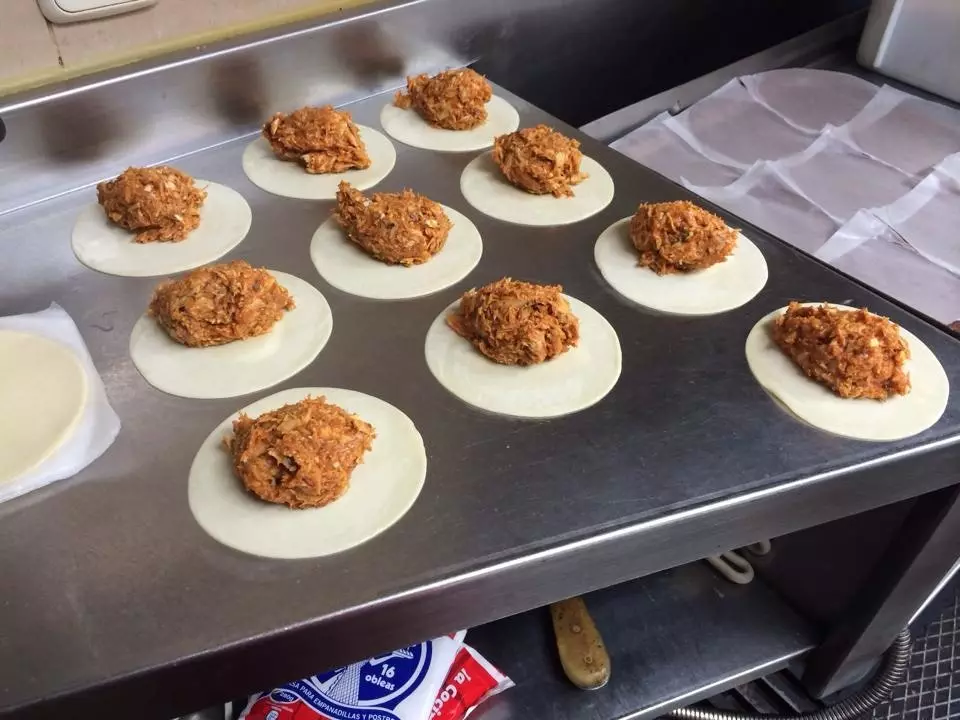
The iconic dumplings at Melo's
At his side was a legion of taverns that helped the name of Lavapiés to resonate as a synonym of traditional and authentic. “ I really liked the Bell ”, acknowledges Ramón, “A winery that we had in front of us and that was specialized in sweet muscatel wines”. That site, like a hundred other genuine spaces, made going out in Lavapiés fashionable. “Among my friends it was normal start in La Mancha, continue in Melo's and finish in Boots , a rock joint on Calle de la Fe”, he tells me Vidal , who also managed a bar called Obelix (precedent of the Traveling that still survives today in Calle del Olivar).
“As a lesbian we tended to move around alternative environments and at that time Chueca had not yet become fashionable. One of the first lively places was the Medea nightclub, on Calle Cabeza . It was very common to go to dinner at Melo's before going to dance," he says. Alice Silvers , promoter of the blog My favorite taverns, one of the few strongholds on the net that has known map the tavern history of the city.
Javier San Martín was also another regular at Melo's in the nineties : “The first time my wife took me. In those years there were many unique places in the neighborhood. I remember the El Madroño pastry shop, on Calatrava street , where they let the audience play an organ they had. They prepared some Delicious Pumpkin Carrot Chocolate Seaweed Cupcakes . All washed down with strawberry tree liqueur. There was also a food house specializing in gastronomy from all the Autonomous Communities”. They were very good years, where the freedom of schedules and the open nature of Lavapiés he made the most restless merchants earn a good amount of money.
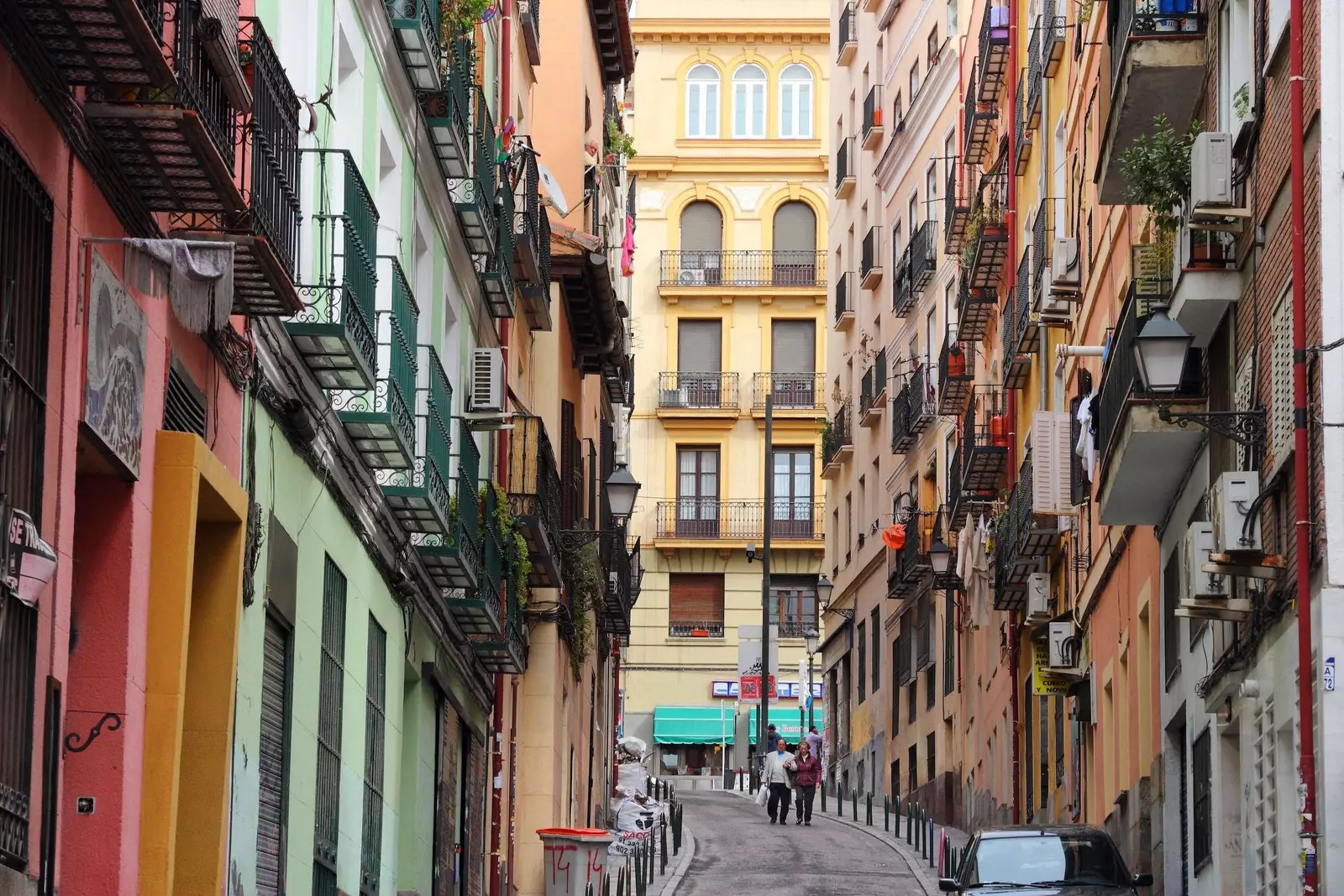
Lavapies, taverns and gentrification
However, as we approach two thousand we find more and more testimonies of the conflict experienced by the neighborhood , besieged by permanent fights and robberies in its tangled streets. “Those were hard times when the City Council made a first attempt at gentrification . It is the time when many Chinese shops open. The fights between them and with other nationalities were continuous”, comments Iñigo López Palacios, a journalist from El País, who was cultural content coordinator in the Madrid section and privileged witness of all that to which residing on Magdalena street between 1998 and 2003 . “It is the time when all the portals of Ave María begin to put up bars. And that the bad area was in Mesón de Paredes ”. That insecurity ended up also affecting the owners of the bars. “I had to fight with a lot of people. It was common that they will try to rob you or rob you during those years”, he warns me. Ramon.
Cesar Montes, at the time owner of the mythical Casa Montes, on Lavapiés street , suffered an assault by three individuals in 2005. This is how it was told in the letters to the editor of the Prisa newspaper: “A touch on the Adam's apple and he fell senseless. There were three of them and they took the wallet with his papers and his money. They left him there, lying in that dark alley that this Madrid under construction has created. In almost 65 years of living in his neighborhood, Cesar had never had anything like this done to him. He came to Lavapiés as a son of emigration and other sons of emigration kicked him out of his street”.
The next fifteen years will be spectators of how Lavapiés returns to a strange normality . sky-high prices and disappearance of the scarce local trade , which do not prevent it from becoming one of the most desirable districts in Europe. Boosted by a very particular mixture of traditional places, many of them renovated by young people, hipster spaces that have known how to take the pulse of their new neighbors and countless Indian, Senegalese and other businesses from other parts of the world.
El Melo's, with its croquettes to eat with a spoon, its impossible slippers and some dumplings in the gochism top , was able to keep the flame alive from an almost unknown Madrid . The one who didn't need to talk about Kilometer Zero (although his loaves of bread were from the Galician Bread Museum that was near the Plaza Mayor), seasonal product (despite the fact that their Padrón peppers were most itchy in summer) or gourmet creations (the slipper being a gastronomically impeccable invention). Ramón, a waiter with an enviable memory who always knew what each group had eaten, it did not matter if there were two or ten people, is the unequivocal example of the greatness of a sector in low hours due to the Coronavirus and forced closures. When asked if he would like someone to continue with his legacy, he answers sincerely: “ I don't care, everyone has to work for what comes out and I already did what I could ”. Today enter the Olympus of the great bars of always next to the Corripio, the Palentino, the Lozano or the García. Long live Melo's and his sneakers.
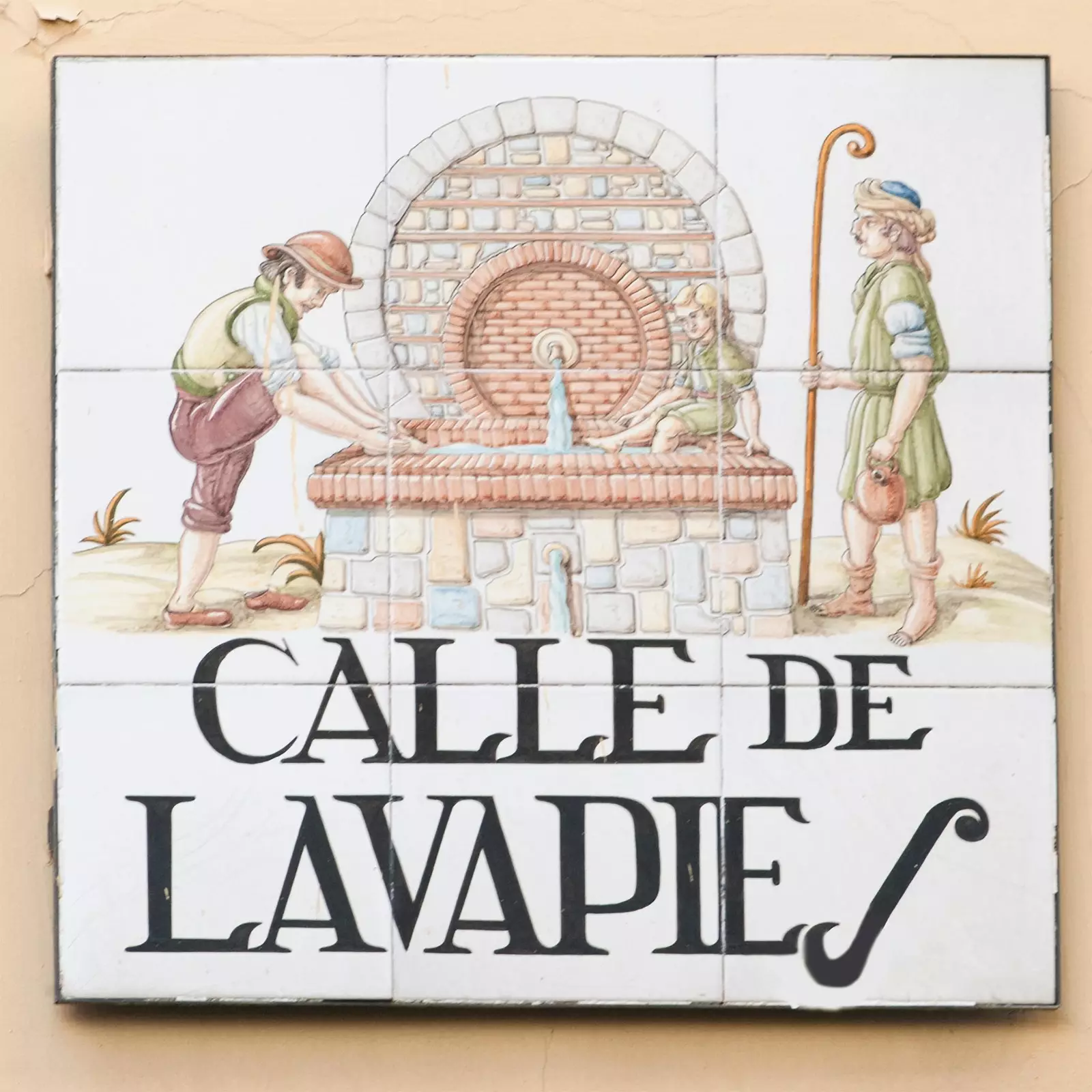
Long live Melo's, long live Lavapiés
